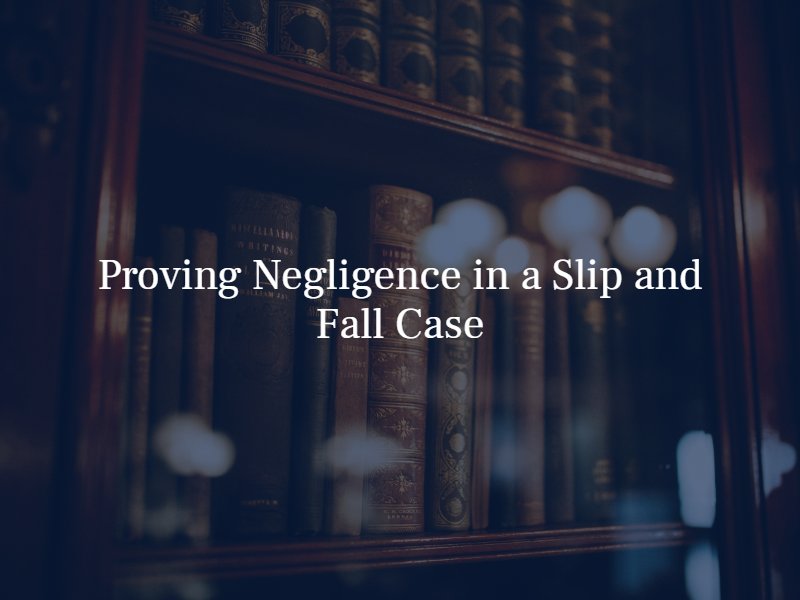Proving Negligence in a Slip and Fall Case
July 31, 2022 Posted In Personal Injury
After a slip and fall accident on someone else’s property, you will have to prove negligence on behalf of the property owner to hold them liable.

How To Prove Negligence
Showing a property owner’s negligence can be challenging as it requires evidence that a dangerous condition existed and either the owner knew or should have known about it and failed to fix it. Doing so comes down to establishing the following four elements of negligence:
Duty
The property owner owed you a duty of care to keep their premises safe. As long as you were a permitted visitor, duty can be relatively easy to prove. Except in very limited circumstances, trespassers are not owed any duty of care.
Breach
The property owner failed to exercise reasonable care in keeping their premises safe, in that they knew, or should have known that the dangerous condition existed for a sufficient period of time before the accident occurred.
Causation
The owner’s failure to maintain the premises in a reasonably safe condition was a substantial factor in causing the accident and your resulting injuries. There must be a clear link between the property hazard and your slip and fall injury.
Damages
Proof you sustained damages (losses) after suffering the slip and fall accident. For example:
- Medical expenses: including doctor’s fees, medications and treatments, etc. and anticipated future medical expenses.
- Lost income due to missed work or losing your job.
- Emotional distress
- Mental anguish
- Pain and suffering
Notice in a Slip and Fall Case
The idea that an owner “knew or should have known” of a dangerous condition on their property is a highly contested issue in slip and fall cases. It is also referred to as the concept of notice, as only when a property owner is aware or should have been aware of a hazardous condition, do they have a duty to repair it. There are two types of notice:
Actual Notice
There is evidence that a property owner was aware of a dangerous condition because they either created it, observed it directly, or were notified about it. Evidence of actual notice might include a letter written by a guest or employee informing the owner of the condition, inspection documents mentioning it, or a previous accident report claiming the hazard as the culprit for an injury.
Constructive Notice
Evidence that the property owner should have been aware of the dangerous condition, even though they did not directly observe it and were not explicitly told of its existence. This can occur if it can be demonstrated that the hazardous condition existed on the property for a sufficient period of time that the owner should have discovered it by inspecting the property and/or performing regular maintenance. For example, a sidewalk pushed up by tree roots takes two to three years to occur, which means an owner would have plenty of time to have seen the hazard and fix it before a fall accident happens. Additionally, constructive notice may be proven if the condition that caused the injury was recurring. For instance, improperly installed gutters will constantly cause water to pool on the ground, which can freeze.
In most cases, proving notice and the property owner’s failure to repair a hazard will require the help of an attorney. If you have suffered a slip and fall, contact a San Bernardino Slip and Fall Attorney today.